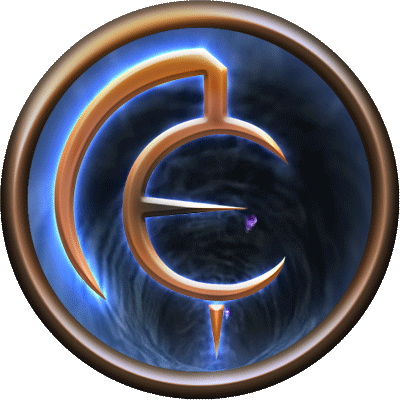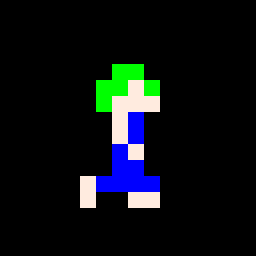Coordinated Lunar Time (LTC) needed due to differing gravitational forces
Nasa is working to create a new standard of time for the Moon that will see clocks move faster than on Earth, according to a White House memo.
The US Office of Science and Technology Policy (OSTP) directed the US space agency to set up a moon-centric time reference system that accounts for its differing gravitational forces.
In a memo on Tuesday, OSTP chief Arati Prabhakar noted that Earth-based clocks would appear to lose 58.7 microseconds per Earth-day as a result of these factors.
Nasa has until 2026 to set up a unified time standard, which Ms Prabhakar referred to as Coordinated Lunar Time (LTC). It will then be used by astronauts, spacecraft and satellites that require highly accurate timekeeping.
This implies we’ll need customized times for every large celestial body. And that we may need to look into a “universe background time” and use that as the new baseline. Kind of like how we have GMT.
I’m only an armchair physicist, but I believe this isn’t possible due to relativity. I know that, at least, there are cases where two observers can disagree on whether an event occurred simultaneously. Besides all the other relativity weirdness, that alone seems to preclude a truly universal time standard. I would love for someone smarter than me to explain more and/or correct me though!
You’re not wrong, so I think that a truly Universal UTC would have to include an observation point as a reference timeframe. (Side note: I realize the following is probably WAY too much overthinking, but I got into it and couldn’t stop. Also, for most practical purposes, probably any of these that involve Earth are going to be effectively equivalent. Also also, maybe for any practical purposes, these are going to be unnecessary because the most relevant form of timekeeping is going to be local time wherever you are, so a “universal” reference timeframe is probably unnecessary.)
So anyway, if our UUTC is going to include a universal reference timeframe, we might as well just use the existing UTC and call that observation point “the point where the Prime Meridian, the Equator, and Mean Sea Level meet on the planet Earth.” The 0-0-0 point on Earth’s surface, so to speak.
Yeah, that point spirals around the sun like a five-year-old ballerina, so maybe we’d want something with a little less movement? But pretty much anything with enough stability to be a good reference point would also have enough gravity that time would move significantly quicker near it, making it dramatically different from the universal average, so maybe that’s not a whole lot better.
I guess we could pick a point along the Earth’s orbit and use that 0-0-0 point on its surface at a specific time of year as that reference point? Say, January 1? But then we’re using time as a factor in the standard definition of time, so that wouldn’t work.
Maybe we just use Earth’s apogee or perigee from the sun, and call the reference point “the location, relative to Sol, of the 0-0-0 point on Earth when the Earth is at its apogee”? But Earth’s orbit and its rotation aren’t synced up; it completes an orbit every 365.256 rotations–that’s why we have Leap Year–meaning that the point would be changing by about a quarter of the circumference of the Earth every year, then snapping back again every fourth year. I guess you could average it, but then it would be somewhere else on Earth’s surface.
We could abandon the 0-0-0 point and just call the reference frame “the point at Earth sea level which is furthest from the sun during aphelion,” but then the actual location would change every year. Plus, the problem with using Earth as the measuring stick at all is that Earth’s orbit wobbles, and can be affected by other orbiting bodies in a seemingly non-deterministic fashion (the three-body problem), and it’s moving away from the sun.
So we could disconnect the reference frame from the actual orbit of the Earth, idealize it, and update it every few years: average out the exact location of Earth sea level furthest from the sun during aphelion over X years of recorded orbital history and Y years of predicted future orbits, and call that averaged location the reference point. Then go back and update it annually as orbital dynamics change and get better.
I think that might be my best (or least-worst) idea for that sort of thing, unless someone can figure out a way to get something out of the CMBR that’s easily measurable and can define a location non-subjectively. Well, subjective to the CMBR, at least.
Taking the risk to sound like a complete idiot but why cant we technically.
-
agree on how late it is.
-
call it universal time.
It might feel like weird to live during different hours but i am sure people will adapt to their local sleeping/waking/eating moments. Most of us arent following our bioclock anyway.
Or is this about needing a way to quantify a unit of time scientifically when not on earth? But then earth reference points wont work either?
In all practicality, that’s probably what most people are going to do. But there will probably need to be a way of coordinating very long-distance (interplanetary-scale) science experiments and such.
-
The observation point will obviously need to be Greenwich, to conform to current time zones. What is the GMT on Jupiter? GMT+10,000?
What about just a measurement base time? we could have that for given points in space time (ST) that accounts for other bodies as well?
So earth is at a given apogee with other significant bodies (SBs) is one time zone
We just increase the measurement of SBs until all the given points of a related points of ST (PSTs) when controlled for the gravity of SBs have the same time within a give precession range.
Seems more scalable and better at accounting for the movement of SBs
We do, GMT.
This is a relativistic correction. Time on the moon runs very slightly faster than time on earth. This means that time on the moon will drift ahead of time on earth. By using a slightly longer second, lunar time will stay in sync with earth time.
Earth sees lunar seconds as too fast. The moon sees earth seconds as too long. Both are completely true. (Welcome to relativity)
For those that didn’t take physics classes, or forgot.
In short, and oversimplified, the closer you are to a gravity source, the slower time passes for you.
The moon’s location at X distance from center of the earth, versus the distance from the surface of the earth to the center of the earth, is enough to be quickly noticeable.
Fun fact, I believe that GPS satellites must also account for this (given that they are just fancy time measuring triangulation machines) and they are extremely close to the center of the earth, compared to the moon.
Nice! When moon travels become common occurrence in the future, programmers will hate dealing with time even more. This list will probably need to be updated soon to add moon time madness (and perhaps time dilation madness): https://gist.github.com/timvisee/fcda9bbdff88d45cc9061606b4b923ca
probably not too soon ;)
the moon is a big hostile useless rock. the colony dreams are just a money grab imo.
The moon is a priceless launchpad for space exploration. In my opinion, that reason alone gives the entire surface infinite value until we can build larger man-made launch platforms in orbit.
This is the main practical reason that I believe that colonies will be founded. Its the clearest rational solution to the gravity well that is earth.
All of the cost of a launch is at the beginning, minimizing that gravity well unlocks insane space vehicle potential.
Why not create timezones for all the planets?
A few reasons for that to my lay-person brain: firstly time zones would be wonky on other planets, the moon especially. Mars would be simplest because it’s only 37 minutes faster. But every planet would have different time zones. But time zones on planets or the moon are only relevant to intra-planet communications. Mars to Earth, even without the time delay, is going to have completely different times. Half an hour drift will make syncing times between planets more important than whatever time zone you are in since you’ll effectively need to adjust time zones every other day. So we’ll have to sync times between planets or have a UTC for each body that gets adjusted.
But that’s not actually what NASA is proposing. For something as close and earth-dependent as the Moon, they’ll just use Earth times until there’s a significant colony up there. What NASA is talking about deals with relativity: experiencing more or less gravity changes how much time you perceive compared to people in different gravities. I.e. people on earth, people on the moon, and people in deep space experience time at different rates. 1 Second for space might be 0.8 seconds of time on a planet. So NASA wants clocks that physically tick faster than Earth to an amount of 0.000058 seconds per day. Which…isn’t a lot for a humans. Hundreds of thousands years just to equal a second. But it is a lot of very precise computers and instruments we use to measure long distances and speed.
Probably needed for GPS! That should be one of the milestones for a colony - a GPS and communication relay constellation, so you can navigate, create precise maps, and always be in communication range for any common amount of data/voice
My guess was encryption, especially for certificates to send packets between Earth and Moon entities, prevent forging or replay/playback attacks. Another Source pretty much confirms it: “An OSTP official said that without a unified lunar time standard it would be challenging to ensure that data transfers between spacecraft are secure and that communications between Earth, lunar satellites, bases and astronauts are synchronized.”
Or set a Solar standard for the entire system.
Relativity is a bitch
Maybe a dumb question, but why couldn’t they just use UTC?
My guess is because the time scale is different, not just the hour offset. “Seconds tick faster than earth” — this would imply that if using UTC, the moon would move from one offset to another, then another and so on over time.
My understanding is that’s exactly the point. To make clocks on the Moon be synchronized with UTC and not drift over time. You can only do that by making the clocks physically tick at different rate. This is because of relativity - time itself on the Moon passes at slightly different rate than on Earth, so if your clock is precise enough, you need to compensate for it. Just like GPS satellites need to compensate for being in slightly lower gravity and going fast relative to stationary clocks on Earth’s surface. This isn’t any kind of illusion, this is how the universe really works. If you’ve seen the movie Interstellar, it’s basically the same effect they experienced on the planet orbiting a black hole, just a much less extreme case.
other people have given good answers to this question but i think it’s worth saying that this isn’t a dumb question. it took a lot of smart people and thousands of years to figure out that time passes at different speeds in different parts of the universe. it’s not intuitive at all.
How sure are we that this isn’t a late April Fools joke? :P
Stupid idea. Why don’t they just use UTC? They know how much the atomic clocks on the moon derive from those on the earth, so they could just factor that in and be done with it.
So atomic decay is dependant on gravity?
The way I understand it is that time itself is altered by gravity and/or velocity. So atomic decay that occurs on a very specific cadence in each reference frame will not occur simultaneously in 2 or more different reference frames that are not in the same gravity, moving at the same velocity. There’s even a measurable though very small difference in the passage of time between sea level and high mountains due to the difference in gravity. I’m leaving a lot out and there’s a bunch of math involved, but i think that’s mostly correct.
Atomic clocks don’t use atomic decay. They used the frequency of the light emitted by a very specific energy change, within an atom, under very controlled conditions.
The frequency of light will look the same on the moon. However, an observer on earth would see a very slightly different frequency from the moon clock.








